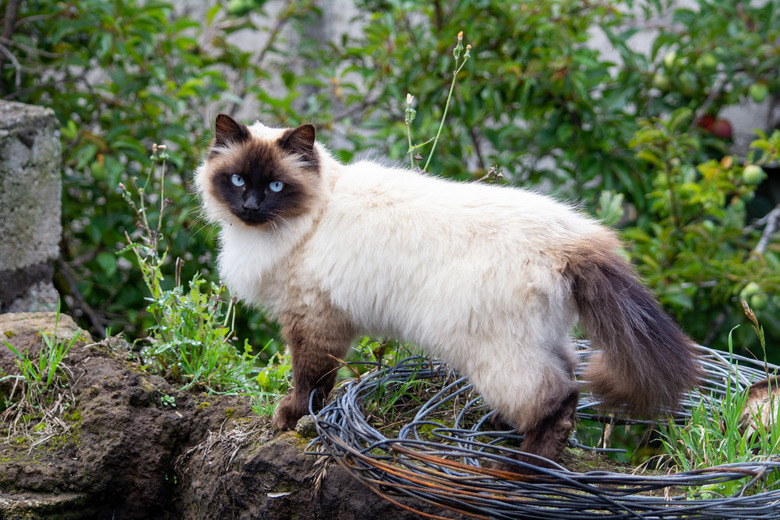Himalayan Cat Allergies
Pet allergies are fairly common. When you have a Himalayan cat allergy, you are reacting to proteins found within the cat's saliva, skin cells, and urine. If you are allergic to Himalayan cats, you may experience a range of allergy symptoms. Medications and lifestyle modifications are often helpful in managing cat allergies.
Is a Himalayan cat hypoallergenic?
Is a Himalayan cat hypoallergenic?
Normally, your immune system produces antibodies that help protect your body from invaders that could potentially make you ill. When your immune system produces antibodies in response to particular allergens, you experience an allergic reaction. It is the general consensus that Himalayan cats are not a hypoallergenic breed. If you are allergic to Himalayans, you will experience the symptoms of an allergic reaction when you come into contact with proteins in their dead skin cells (dander), saliva, and urine.
Dander is quite small and can stay in the air for a long time. Dander can also collect on your clothes and upholstered furniture. A cat's saliva sticks to furniture, carpets, bedding, and clothes, and saliva can become airborne when it dries.
Symptoms of Himalayan cat allergy
Symptoms of Himalayan cat allergy
Common symptoms of an allergic reaction to Himalayan cats include itchy, watery eyes, nasal congestion, sneezing, coughing, postnasal drip, facial pressure and pain, wheezing, and difficulty breathing. If you are allergic to Himalayans, you may also develop skin symptoms when you come into contact with them, such as itchy skin and hives. Symptoms may take as long as 48 hours to show. If you think you are allergic to cats, you can see an allergist for allergy testing.
Medications for Himalayan cat allergies
Medications for Himalayan cat allergies
Medications for allergic responses caused by Himalayans don't differ from treatments for other cat allergies. Usually, you'll take anti-histamines — following your doctor's recommendations — while in contact with cat dander and allergens. Tablets, eye drops, and nasal sprays are available over-the-counter.
If you're a diagnosed asthmatic, keep your inhaler nearby; you may need it more often when a Himalayan is around. Decongestants and immunotherapy (allergy shots) may also be beneficial. Consult your doctor about what treatment options are best for you.
Keep a clean house
Keep a clean house
The Himalayan-owning household must be kept fastidiously clean. You may need to consider removing any wall-to-wall carpets, as carpeting makes it difficult to clean — you'll never eliminate all the Himalayan's dander from carpets. Steam clean flooring, beds, and soft fabrics. Use HEPA-filtered vacuum cleaners and HEPA air purifiers to strip airborne allergens from the air you're breathing. Take every step to keep dust levels down.
If you live with other people, ask someone without cat allergies to clean the litter box for you. Hiring a professional to clean your home regularly may also be beneficial as it will reduce your exposure to allergens while cleaning.
Bathe your Himalayan cat
Bathe your Himalayan cat
Although he won't appreciate it, most Himalayans accept bathing if it's done from an early age. Buy pet shampoo from a veterinarian and bathe your Himalayan monthly; bathing him more frequently may damage his coat and skin. Bathing will encourage less shedding. Groom him outside when he's damp or dry. Frequent grooming keeps allergens down as it also encourages less shedding. Regularly treat against fleas; he'll lick his coat, spreading more protein, if he's itchy.
Make a Himalayan-free zone
Make a Himalayan-free zone
If you live with a Himalayan, keep at least one room of your home off-limits to her. Many people choose to make their bedrooms pet-free zones when they suffer from allergies.


